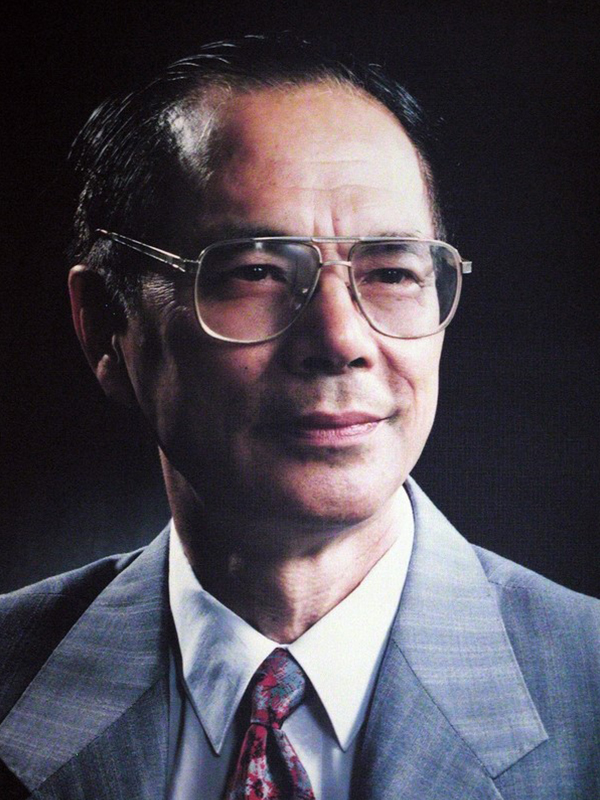Professor HAN Ji-Sheng
Professor HAN Ji-Sheng (2nd COT Award Winner)


Affiliation at the time of the Award:
- Academician of Chinese Academy of Sciences
- Honorary Director of Neuroscience Research Institute, Peking University
Biography
Professor Han Ji-Sheng was born in 1928 in Xiaoshan, Zhejiang Province of China. He graduated from the Shanghai Medical College in 1952, specialized as a physiologist in Dalian Medical College (1953) and served in Harbin Medical University (1953), Beijing College of Traditional Chinese Medicine (1961), and Beijing Medical College (1962 to date). 1979 saw his promotion from lecture to Professor. He served successfully as Director of the Department of Physiology (from 1983 to 1993), Director of the Neuroscience Research Institute (from 1993 to 2010), and Honorary Director of the Institute (1993 to present) of the Peking University Health Science Centre (formerly Beijing Medical College). Professor Han was elected academician of the Chinese Academy of Sciences in 1993. He founded in 1989 the Chinese Association for Pain Medicine, which became the Society of Pain Medicine under the auspices of Chinese Medical Association in 1992. He also founded the Chinese Journal of Pain Medicine in 1995, a monthly journal in Chinese with English abstracts.
Professor Han has been engaged in neurobiological research on acupuncture mechanisms since 1965. He found that acupuncture and electroacupuncture (EA) produced analgesic effect through the activation of the endogenous anti-nociceptive mechanisms mediated by opioid peptides and neurotransmitters such as monoamines. EA of different frequencies can increase the release of different kinds of neuropeptides. The effectiveness of EA analgesia depends on the balance between opioids and the anti-opioids in the central nervous system. He designed the device named Han's Acupoint Nerve Stimulator (HANS), which has been widely used in clinical practice for pain management as well as for the treatment of drug dependence. Professor Han won funding from the National Institute of Drug Abuse, NIH, USA for the study of neurobiological mechanisms of acupuncture analgesia for 13 consecutive years from 1987 to 2000. He has also won numerous grants from the National Natural Science Foundation of China, the Department of Health and the Department of Science and Technology of China for nearly half a century. Currently, his translational research has broadened from the field of pain control and drug addiction to the use of HANS for the treatment of autism and assisted reproductive medicine with considerable success.
Professor Han has devoted considerable time and efforts to teaching. He edited an influential neuroscience textbook in Chinese (first edition in 1993, second edition in 1999 and the third edition in 2008) and a textbook of Pain in Chinese (2012).
Professor Han has visited 27 countries and areas since 1979. He has given over 200 lectures including plenary lectures in International Union of pharmacological sciences (1994 in Montreal, 2006 in Beijing) and International Association for the Study of Pain (2010, Montreal). Notably, he gave the first lecture in the Consensus Conference on Acupuncture sponsored by NIH in 1997, which marked the acceptance of acupuncture as a medical technique with scientific evidence and clinical effectiveness in the Western world, endorsed by NIH, USA. He also served as scientific consultant of the NIH (from 1991 to 2003) and the World Health Organization (WHO, from 1990 to 2002). Professor Han was named honorary life member of the International Association for the Study of Pain (IASP) in 2012. He is the only honorary IASP member in China. Recently, he has been appointed by the International Standard Organization (ISO) to lead the drafting of the international standard for electroacupuncture stimulator.
The research achievements of Professor Han can be summarized as follows:
- Acupuncture can increase the pain threshold (decrease pain sensitivity) of normal humans and animals, and induce analgesic effect in patients with acute or chronic pain, and in animal models with varies pain problems.
- One of the mechanisms of acupuncture analgesia is that acupuncture may increase the production and release of neurochemical substances such as opioid peptides and some neurotransmitters in the central nervous system that could lower the pain sensitivity. The nerve pathways activated by electroacupuncture of different frequencies have been identified at least partly.
- An electronic medical device has been invented to improve the technique of electroacupuncture by using self-sticky electrodes placed on the skin of the acupoints to replace the needles so that electrical stimulation can be delivered to the acupoints precisely and easily to achieve desired therapeutic effect. The device was named Han's acupoint nerve stimulator (HANS).
- HANS of different frequencies can be used for the treatment of drug abuse, including physical dependence and psychic dependence for morphine and heroin, and to prevent the relapse of heroin abuse. This has been shown in a chapter (Acupuncture) written by professor Han in the Comprehensive Textbook of Substance Abuse (4th Ed. 2005; 5th Ed. 2011).
- HANS can improve the symptoms of autistic patients. The underlying mechanism of action may be related to the increased production of endogenous oxytocin and arginine vasopressin, the two neurohormones implying for social activities.
- HANS of specific frequency was reported by Han's team to significantly increase the success rate of invitro fertilization and embryo transfer (IVF-ET, or “test tube baby”) from 30% to 50%.
- Professor Han and his group has made a significant contribution to the understanding of acupuncture mechanisms and to promoting the use of acupuncture all over the world.